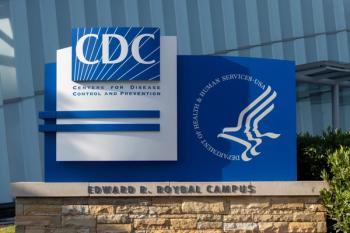
- August 2014 Pain Awareness
- Volume 80
- Issue 8
Interactions with Hepatitis C Antivirals
Over the past few years, several new antiviral drugs have been added to the therapeutic options for HCV, including boceprevir, telaprevir, simeprevir, and sofosbuvir. These new therapies have several important drug interactions.
Boceprevir
Boceprevir is primarily metabolized by aldo-keto reductase but is also a substrate and inhibitor of CYP3A4 and P-glycoprotein (P-gp).1 In one study, ketoconazole increased the concentration of a single boceprevir dose by 130%. It is unclear whether this degree of increase in boceprevir will result in an increase in side effects (nausea, fatigue, and anemia). Boceprevir-induced CYP3A4 inhibition increased the area under the concentrationtime curve (AUC) of midazolam by 430% and the AUC of atorvastatin by 2.7-fold. Boceprevir has been noted to cause a modest (20%) increase in digoxin levels.2
Inducers of CYP3A4 (eg, rifampin, efavirenz) would be expected to reduce the plasma concentration of boceprevir sufficiently to impede its antiviral efficacy. No data are available regarding the potential for rifampin to reduce boceprevir concentrations, but one should assume that the combination would result in low boceprevir levels; therefore, the combination should be avoided. Boceprevir has been noted to reduce the AUC of atazanavir, lopinavir, and darunavir (35% to 45%) by an undefined mechanism. Some reduction in anti-HIV efficacy could result.
Conversely, ritonavir-boosted lopinavir and darunavir reduced the AUC of boceprevir by 35% to 45%. The AUC of ethinyl estradiol was reduced 24% during concurrent boceprevir administration, but the concentration of the progestin drospirenone was increased by about 100%. The impact of these changes on the risk for pregnancy or hyperkalemia due to drospirenone is unknown. No change in norethindrone levels were noted during boceprevir exposure.2
Telaprevir
Telaprevir is a substrate and inhibitor of CYP3A4. In one study, ketoconazole increased the telaprevir concentration by over 60%. While data on the combination of telaprevir and other potent CYP3A4 inhibitors are lacking, one should expect increased telaprevir concentrations during coadministration with other CYP3A4 inhibitors. Signs of an excessive telaprevir concentration include anemia, rash, and nausea. Telaprevir is a potent CYP3A4 inhibitor, increasing the AUC of orally administered midazolam nearly 9-fold. The cyclosporine concentration and half-life increased about 4.5-fold following concurrent telaprevir administration. When telaprevir was administered with tacrolimus, the AUC of tacrolimus increased 70-fold and its half-life increased nearly 5-fold. Telaprevir increased the AUC of amlodipine and atorvastatin by 2.8- and 7.9-fold, respectively.3 One should expect marked increases in the plasma concentration of CYP3A4 substrates when telaprevir is coadministered. Digoxin concentration increased by 85% during telaprevir administration, an indication of its P-gp inhibition.
The AUC of telaprevir has been reported to be reduced by 20% to 50% when telaprevir is coadministered with ritonavir-boosted atazanavir, fosamprenavir, lopinavir, and darunavir. Rifampin reduced the telaprevir concentration by over 90% and should not be used with telaprevir. The AUC of ethinyl estradiol was reduced 28% during concurrent telaprevir administration.
Simeprevir
Simeprevir is a substrate and modest inhibitor of CYP3A4, P-gp, and organic anion—transporting polypeptide 1B1/3 (OATP1B1/3).4 Erythromycin increased the AUC of simeprevir by about 7.5-fold. Other CYP3A4 inhibitors (eg, ketoconazole, itraconazole, conivaptan) are likely to produce similar increases; all should probably be avoided. If modest CYP3A4 inhibitors (eg, diltiazem, fluconazole) are coadministered, signs of an elevated simeprevir plasma level (eg, nausea, fatigue, hyperbilirubinemia) should be monitored for. During simeprevir coadministration, the AUC of midazolam is increased by 45%, the AUC of simvastatin is increased by 50%, and the AUC of atorvastatin is increased by 112%. The AUC of rosuvastatin, an organic anion–transporting substrate, increased by nearly 3-fold with concurrent simeprevir administration. Simeprevir increased the AUC of digoxin by about 40%.
Sofosbuvir
Sofosbuvir is a prodrug that is metabolized to an active metabolite. Only sofosbuvir is a substrate for P-gp. In one study, the P-gp inhibitor cyclosporine increased the concentration of sofosbuvir and an inactive metabolite by 4.5-fold, but this may not be associated with an increase in the active metabolite.5 It is likely that inducers of P-gp would reduce the concentration of both the prodrug and active metabolite. P-gp inducers such as St. John’s wort, rifampin, and carbamazepine should be avoided with the use of sofosbuvir.
Endnote
About 60% of marketed drugs are substrates for CYP3A4, possibly resulting in many interactions with telaprevir, boceprevir, and simeprevir. The coadministration of telaprevir and boceprevir should be avoided with CYP3A4 substrates that have a narrow therapeutic range (eg, colchicine, ergot alkaloids, fentanyl, carbamazepine). The use of CYP3A4 or P-pg inducers (eg, carbamazepine, rifampin, barbiturates, St. John’s wort) should be monitored in patients using any of the HCV antivirals discussed above.
Drs. Horn and Hansten are both professors of pharmacy at the University of Washington School of Pharmacy. For an electronic version of this article, including references, if any, visit www.hanstenandhorn.com.
References
- Wilby KJ, Greanya ED, Ford JA, Yoshida EM, Partovi N. A review of drug interactions with boceprevir and telaprevir: implications for HIV and transplant patients. Ann Hepatol. 2012;11:179-185.
- Victrelis [package insert]. Whitehorse Station, NJ: Merck Sharp & Dohme Corp; 2013.
- Lee JE, van Heeswijk R, Alves K, Smith F, Garg V. Effect of the hepatitis C virus protease inhibitor telaprevir on the pharmacokinetics of amlodipine and atorvastatin. Antimicrob Agents Chemother. 2011;55:4569-4574.
- Olysio [package insert]. Foster City, CA: Gilead Sciences, Inc; 2013.
- Sovaldi [package insert]. Titusville, NJ: Janssen Products, LP; 2013.
Articles in this issue
over 11 years ago
2014 Lifetime Achievement Awardover 11 years ago
2014 Specialty Pharmacist of the Yearover 11 years ago
2014 Military Pharmacist of the Yearover 11 years ago
2014 Technician of the Yearover 11 years ago
2014 Future Pharmacist of the Yearover 11 years ago
2014 Patient Care Provider of the Yearover 11 years ago
2014 Technology Innovator of the Yearover 11 years ago
2014 Civic Leader of the Yearover 11 years ago
2014 Entrepreneur of the YearNewsletter
Stay informed on drug updates, treatment guidelines, and pharmacy practice trends—subscribe to Pharmacy Times for weekly clinical insights.


















































































































































































































